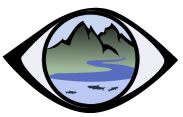Abstract
Missoula County recently performed a pilot Channel Migration Zone (CMZ) mapping effort for the Clark Fork River from Missoula to Huson, in part to explore the potential use of such mapping as an educational and management tool. The pilot project consisted of an assessment of historic rates and patterns of river movement, and delineation of a 100- year migration corridor. With continued collaboration between the county, technical advisory committees and the project contractor, strong considerations were given to inherent uncertainties associated with the prediction of a century of future river migration. Embarking on this effort as a pilot project proved valuable, as involved parties learned a great deal regarding the process, methodology, limitations, and potential applications of CMZ mapping. This will allow the county to pursue mapping in other areas with full knowledge of the mapping process methodology, and potential to inform regulatory decisions such as subdivision approval or floodplain permitting. The pilot project also revealed that useful, graphically compelling interim products can be generated to educate citizens regarding river dynamics in specific areas. Missoula County learned that it is beneficial to work closely with its consultant in a pilot CMZ in collecting imagery, defining project reach boundaries, accessing locally available data, and coordinating local technical review. In summary, the experience in Missoula County reflects the benefit of exploring this process as a relatively streamlined pilot, to engage local government and advisory personnel in a collaborative approach to developing an effective tool for both public outreach and floodplain management.
Start Date
5-3-2010 2:00 PM
End Date
5-3-2010 2:30 PM
Document Type
Presentation
Applied Geomorphology 100-year Channel Migration Zone (CMZ) Map for the Clark Fork River -- Bitterroot River to Huson
Missoula County recently performed a pilot Channel Migration Zone (CMZ) mapping effort for the Clark Fork River from Missoula to Huson, in part to explore the potential use of such mapping as an educational and management tool. The pilot project consisted of an assessment of historic rates and patterns of river movement, and delineation of a 100- year migration corridor. With continued collaboration between the county, technical advisory committees and the project contractor, strong considerations were given to inherent uncertainties associated with the prediction of a century of future river migration. Embarking on this effort as a pilot project proved valuable, as involved parties learned a great deal regarding the process, methodology, limitations, and potential applications of CMZ mapping. This will allow the county to pursue mapping in other areas with full knowledge of the mapping process methodology, and potential to inform regulatory decisions such as subdivision approval or floodplain permitting. The pilot project also revealed that useful, graphically compelling interim products can be generated to educate citizens regarding river dynamics in specific areas. Missoula County learned that it is beneficial to work closely with its consultant in a pilot CMZ in collecting imagery, defining project reach boundaries, accessing locally available data, and coordinating local technical review. In summary, the experience in Missoula County reflects the benefit of exploring this process as a relatively streamlined pilot, to engage local government and advisory personnel in a collaborative approach to developing an effective tool for both public outreach and floodplain management.
